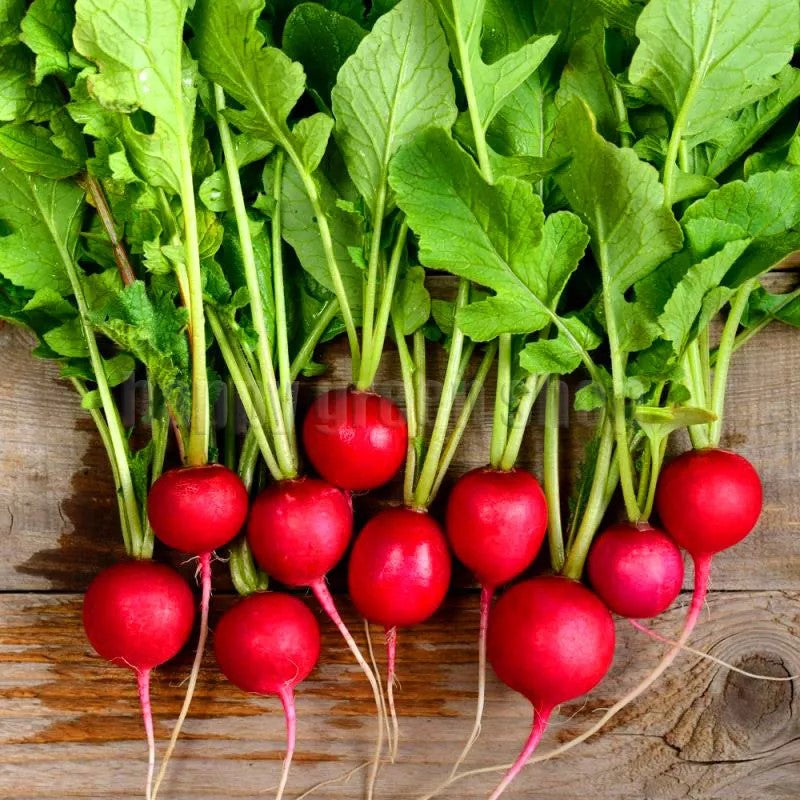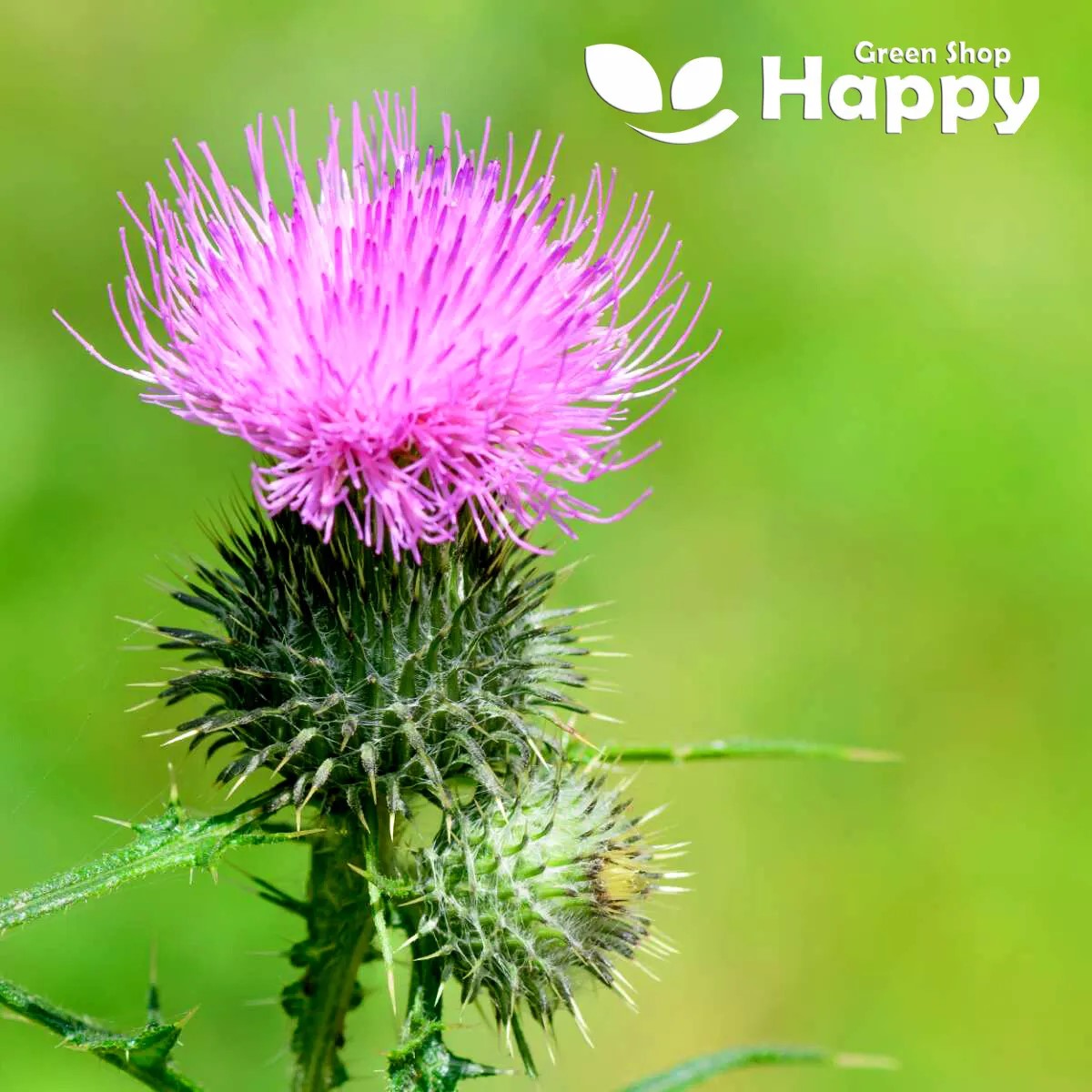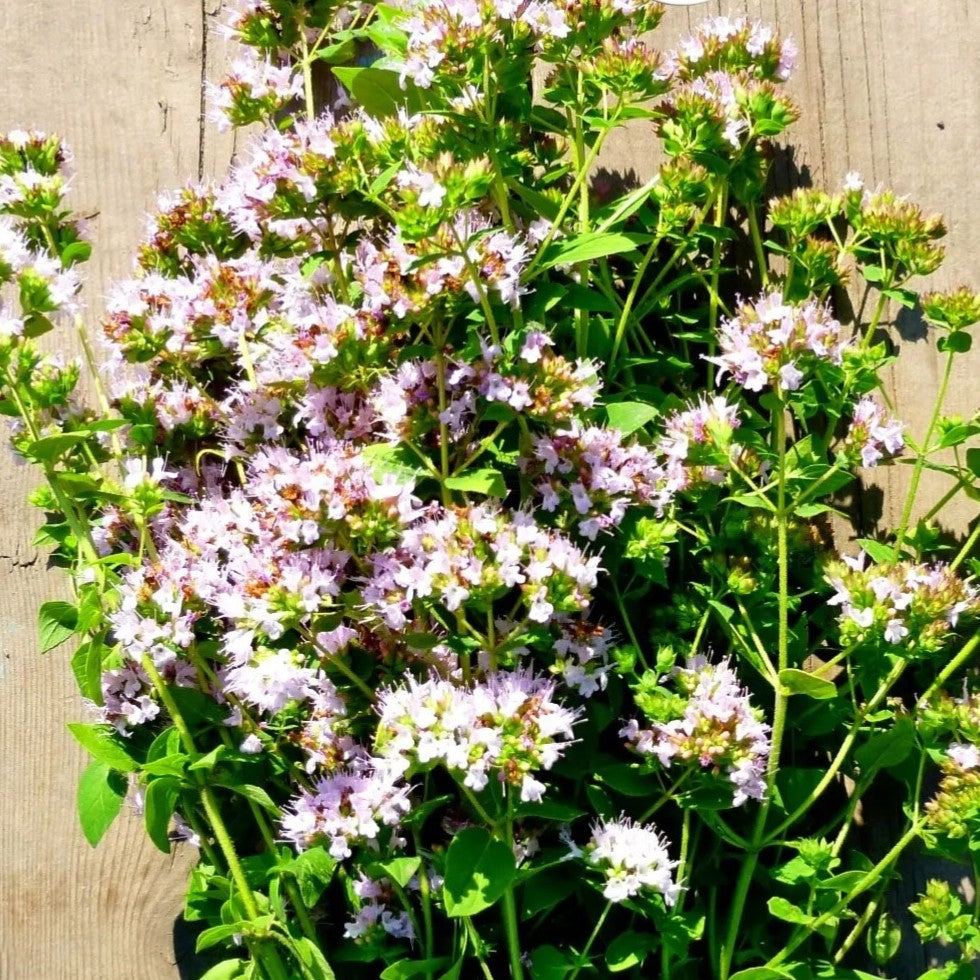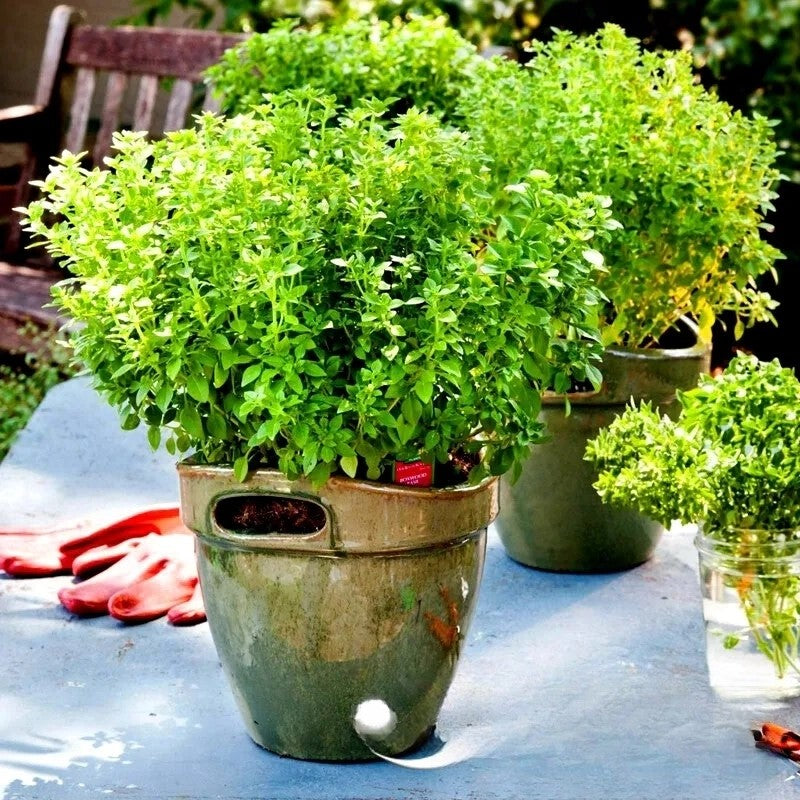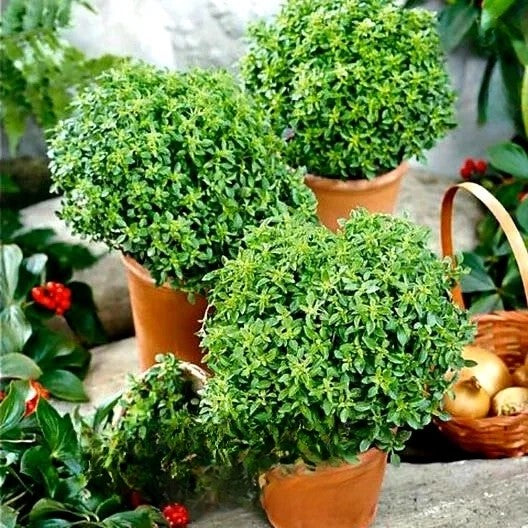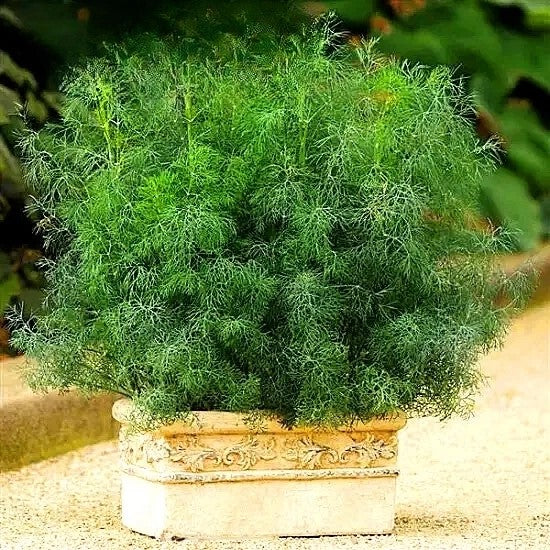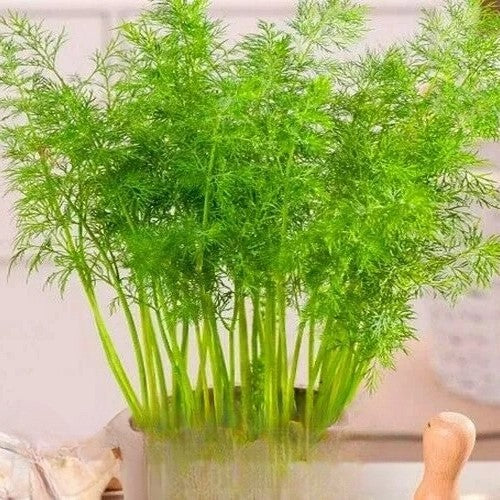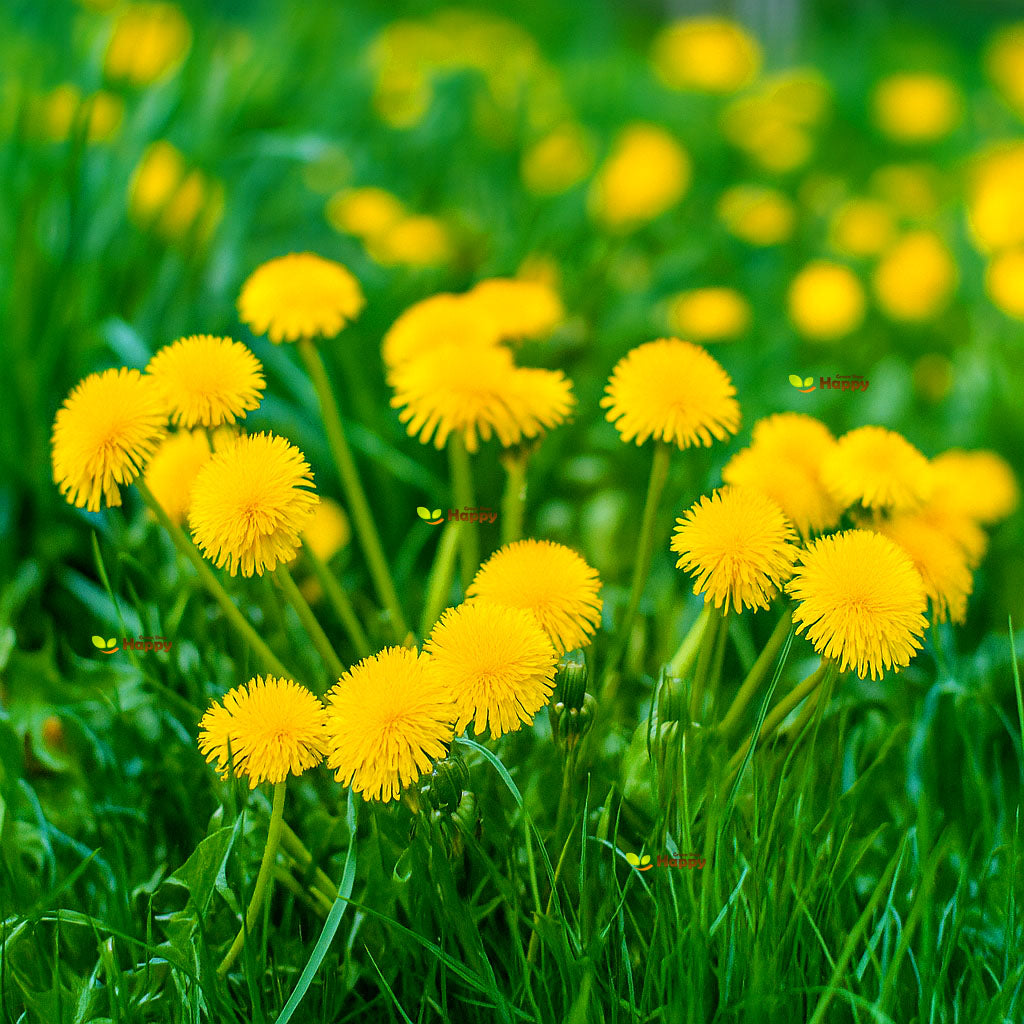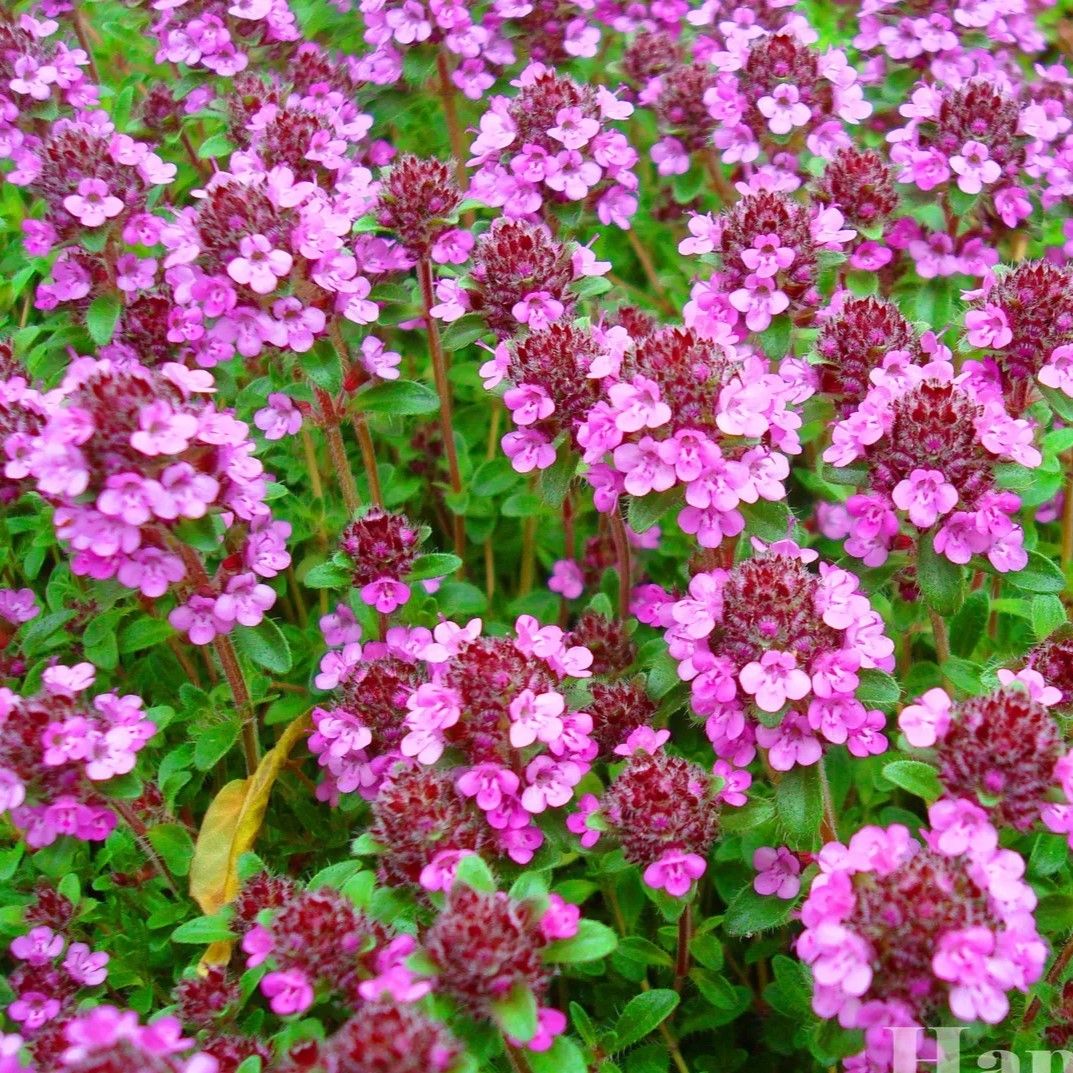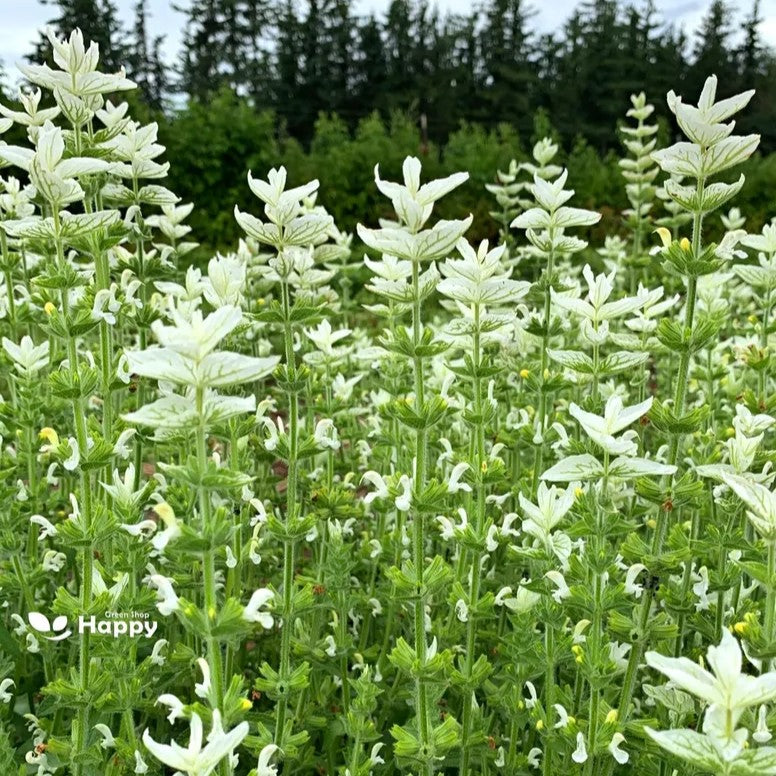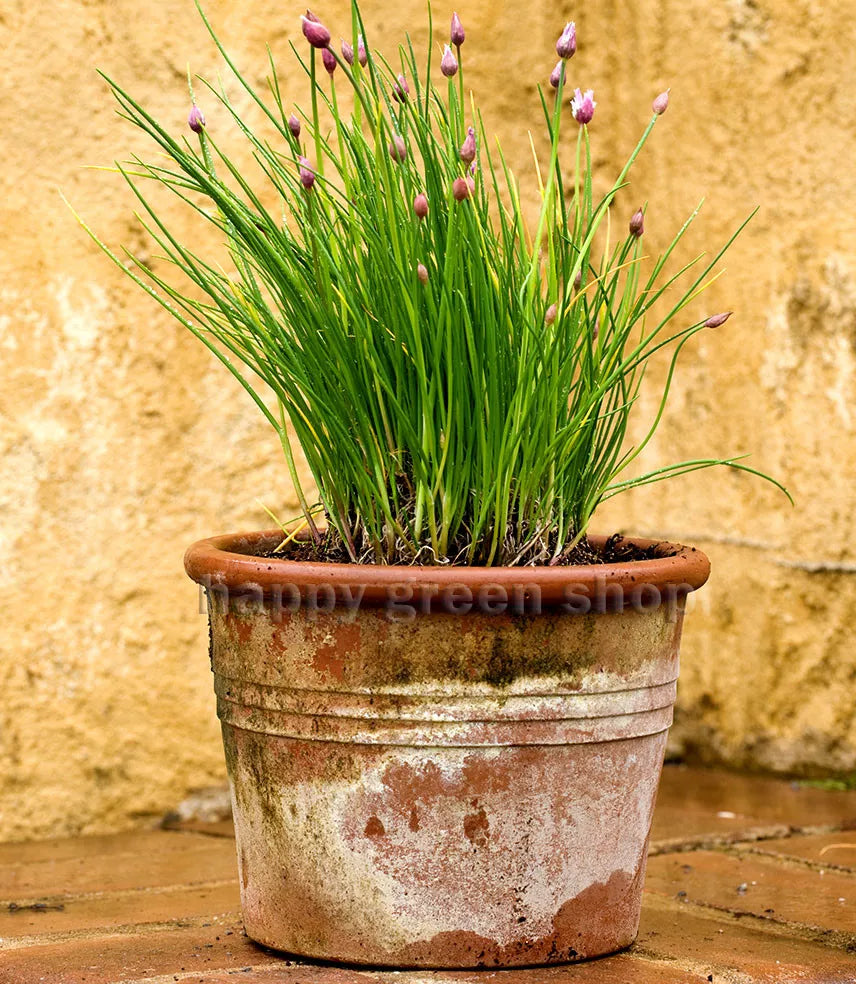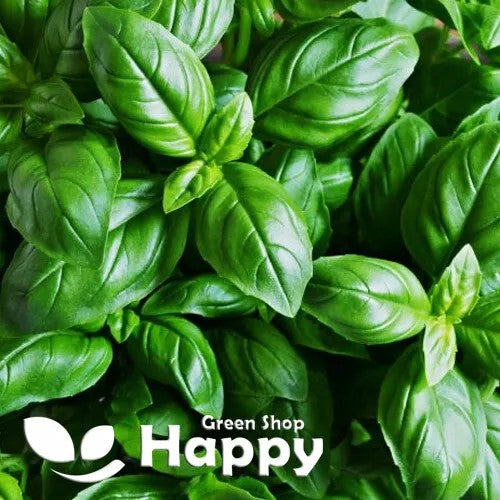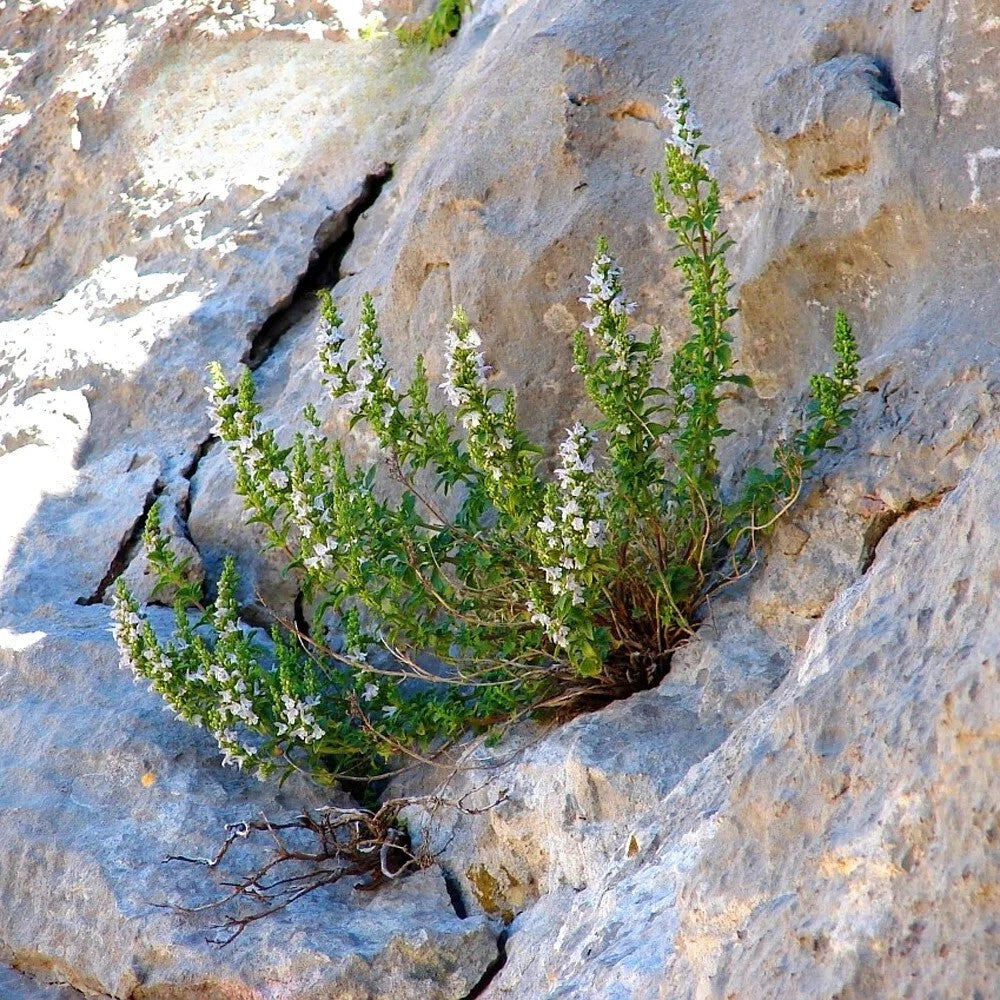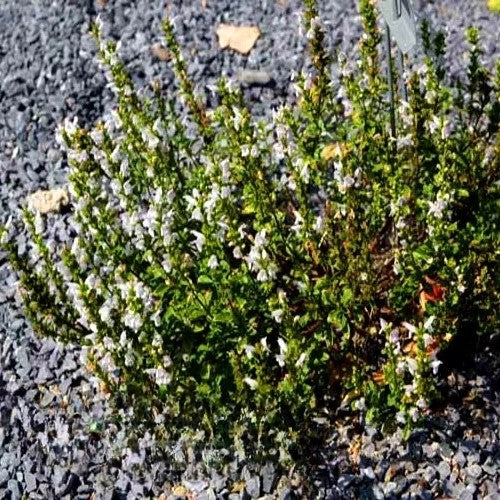Sort by:
54 products
54 products
Dwarf Minette Greek Basil – 500 Seeds (Ocimum basilicum)
Dwarf Minette Greek Basil is a compact, aromatic basil variety prized for its small, flavorful leaves and strong fragrance. Ideal for Mediterranean cooking, pesto, salads, and garnishes, this basil brings a fresh, aromatic touch to every dish.
Its dwarf habit makes it perfect for garden beds, containers, or windowsills. Easy to grow and fast-maturing, Dwarf Minette Greek Basil provides a steady harvest throughout the growing season.
How to Grow
-
Sow indoors: February – April
-
Sow outdoors: After last frost, spacing 20–25 cm apart
-
Position: Full sun
-
Soil: Fertile, well-drained soil enriched with compost
-
Care: Water moderately; pinch back tips to encourage bushy growth
Key Features
-
Compact dwarf variety with small, flavorful leaves
-
Strong aromatic flavor ideal for Mediterranean dishes, pesto, salads, and garnishes
-
Fast-growing and easy to maintain
-
Suitable for garden beds, containers, or windowsills
-
Continuous harvest when trimmed regularly
Harvest
-
Harvesting period: 60–75 days after sowing
-
Pick leaves regularly to promote new growth and maintain flavor.
Short Tip
Pinch back the growing tips regularly to encourage bushy plants and maximize leaf production.
Dwarf Dill 'Forrest' – Seeds
(Anethum graveolens) – Compact, Aromatic Herb
Dwarf Dill 'Forrest' is a compact, slow-bolting variety ideal for small gardens, pots, and window boxes. Its fragrant, feathery leaves are perfect for seasoning salads, soups, pickles, and fish dishes. This variety produces consistent, tender foliage and is easy to grow even in limited space.
Key Features
-
Type: Annual herb
-
Height: Dwarf, 25–35 cm
-
Flavor: Classic aromatic dill, mild and fresh
-
Harvest: Leaf harvest from 40–50 days after sowing
-
Use: Culinary seasoning, pickling, fresh salads
Ideal For
-
Small gardens, balconies, and containers
-
Culinary use in salads, soups, and sauces
-
Companion planting in vegetable beds
-
Homegrown, fresh herb supply
Sowing & Growing
-
Sow outdoors: March–June, thin seedlings to 10–15 cm apart.
-
Sow indoors: February–April, transplant seedlings carefully.
-
Soil: Light, well-drained, moderately fertile.
-
Sunlight: Full sun preferred.
-
Harvest: Cut leaves as needed; avoid cutting entire plants for continuous growth.
Care Tips
-
Keep soil evenly moist for tender leaves.
-
Regular harvesting encourages bushier growth.
-
Protect young plants from strong wind or heavy rain.
Dwarf Dill ‘Compatto’ – 1000 Seeds (Anethum graveolens)
Description:
Enhance your kitchen garden with Dwarf Dill ‘Compatto’ (Anethum graveolens), a compact, bushy herb perfect for small spaces. Producing feathery green foliage with a strong, aromatic flavor, it’s ideal for seasoning soups, salads, pickles, and fish dishes. This easy-to-grow, fast-maturing variety is suitable for containers, borders, and herb gardens, attracting beneficial insects while providing fresh, flavorful leaves throughout the growing season.
Key Features
-
Compact, bushy growth habit ideal for small gardens
-
Aromatic feathery foliage for culinary use
-
Fast-growing and easy to cultivate
-
Attracts beneficial insects
-
Suitable for containers and herb beds
Ideal For
-
Kitchen and container gardens
-
Herb borders and mixed plantings
-
Culinary use: salads, soups, pickles, and fish
-
Pollinator-friendly herb gardens
Sowing & Growing
-
Sow Indoors: February–April
-
Sow Outdoors: March–May
-
Germination: 7–14 days at 15–20°C
-
Height: 25–30 cm
-
Spacing: 20–25 cm apart
-
Light: Full sun
-
Soil: Well-drained, fertile
Care Tips
-
Water moderately and keep soil evenly moist
-
Harvest leaves regularly to encourage bushy growth
-
Mulch lightly to retain moisture
-
Can self-seed for future crops
Dandelion – Seeds (Taraxacum officinale)
Dandelion (Taraxacum officinale) is a hardy perennial known for its bright yellow flowers and fluffy seed heads. A versatile and low-maintenance plant, it attracts pollinators such as bees and butterflies, supports beneficial insects, and can be used in salads, teas, and herbal remedies. Ideal for wildflower gardens, meadows, and naturalized areas, it adds color and ecological value while requiring minimal care.
Why Grow "Dandelion"
-
Bright yellow flowers and distinctive seed heads
-
Attracts pollinators and beneficial insects
-
Edible leaves and flowers for salads and teas
-
Low-maintenance and hardy in most soils
Key Features
-
Type: Perennial (Taraxacum officinale)
-
Height: 15–30 cm
-
Flowering: Spring to autumn
-
Position: Full sun to partial shade
-
Uses: Wildflower gardens, meadows, naturalized areas, edible gardens
Ideal For
-
Naturalized or meadow-style gardens
-
Pollinator-friendly planting
-
Edible and herbal gardens
-
Gardeners seeking low-maintenance, ecological plants
Sowing & Growing
-
Sow indoors: Early spring
-
Sow outdoors: Directly in soil after frost
-
Germination: 7–14 days
-
Space seedlings: 10–15 cm apart
-
Prefers well-drained soil and sunny locations
Creeping Thyme Seeds (Thymus serpyllum)
A fragrant and low-growing perennial, Creeping Thyme forms a dense mat of tiny evergreen leaves topped with clusters of purple-pink blooms in summer. Hardy and drought-tolerant, it’s ideal as ground cover, for filling gaps between paving stones, or spilling over rock walls. Highly attractive to bees and pollinators, it’s both ornamental and practical.
What Makes It Special
-
Fragrant foliage and carpets of summer blooms
-
Hardy, drought-tolerant, and evergreen ground cover
-
Attracts bees, butterflies, and pollinators
Key Features
-
Botanical name: Thymus serpyllum
-
Hardy perennial, evergreen
-
Height: 5–10 cm (2–4 in)
-
Bloom time: Summer
Ideal For
-
Ground cover and edging
-
Rock gardens and between paving stones
-
Pollinator-friendly landscapes and herb gardens
Sowing
-
Sow indoors Feb–Apr or outdoors Apr–Jun
-
Surface sow; press seeds gently, do not cover deeply
-
Keep moist until germination (14–28 days at 15–20°C)
-
Thin seedlings 15–20 cm apart
-
Flowers the second year after sowing
Clary Sage – White Swan Seeds (Salvia horminum)
Bring elegance and fragrance to your garden with Clary Sage – White Swan (Salvia horminum). This striking annual herb is prized for its large, pure white bracts that surround tiny flowers, creating a dramatic, eye-catching display. Both ornamental and aromatic, it’s an excellent choice for garden beds, borders, and cut flower arrangements.
How to Grow
-
Sow indoors in early spring or directly outdoors after the last frost.
-
Choose a sunny location with well-drained soil.
-
Lightly cover seeds with fine soil and keep moist until germination (10–20 days).
-
Thin seedlings once large enough to handle, spacing them about 20–25 cm apart.
-
Water regularly but avoid waterlogging.
-
Deadhead spent blooms to encourage prolonged flowering.
Key Features
-
Pure white bracts that create a bold floral display
-
Easy-to-grow annual, fast to flower in a single season
-
Aromatic foliage, often used in traditional remedies and crafts
-
Excellent as a cut flower for fresh or dried arrangements
-
Attracts bees, butterflies, and other pollinators
Ideal For
-
Cottage gardens and flower borders
-
Cutting gardens and bouquets
-
Pollinator-friendly landscapes
-
Containers and decorative pots
Sowing
-
Best time: Early spring indoors or outdoors after frost
-
Germination: 10–20 days
-
Sow thinly, cover lightly, and keep soil consistently moist
-
Prefers full sun and well-drained soil
Quick Tip
-
For a longer display, stagger sowings every few weeks during spring and early summer.
Chives 'Bohemia' - 1000 seeds (Allium schoenoprasum) - Hardy Perennial - Overwintering
£1.15
Unit price perChives 'Bohemia' - 1000 seeds (Allium schoenoprasum) - Hardy Perennial - Overwintering
£1.15
Unit price perChives ‘Bohemia’ – Seeds (Allium schoenoprasum) – Hardy Perennial
Chives ‘Bohemia’ is a hardy perennial herb, perfect for overwintering and providing fresh growth year after year. Known for its fine, hollow green leaves and mild onion flavor, it’s a versatile kitchen herb ideal for salads, soups, sauces, and garnishes. In summer, attractive purple-pink flowers appear, loved by bees and pollinators, making this a decorative as well as useful garden plant.
How to Grow
-
Sow indoors: February – April in pots or trays at 15–20°C.
-
Sow outdoors: April – July in finely prepared soil.
-
Thin or transplant seedlings to 20 cm apart.
-
Prefers full sun or partial shade and well-drained soil.
-
Cut regularly to encourage fresh growth.
Key Features
-
Hardy perennial herb with overwintering growth
-
Fine, mild onion-flavored leaves
-
Decorative purple flowers attract pollinators
-
Easy to grow in pots, borders, or herb gardens
-
Reliable year-round harvests
Ideal For
-
Fresh salads, soups, sauces, and garnishes
-
Herb gardens, borders, and containers
-
Attracting bees and pollinators
Sowing & Harvest
-
Sow: February – July
-
Harvest: May – October, with regrowth in spring
Quick Tip
Divide clumps every few years to maintain healthy growth and extend the lifespan of your chive plants.
Basil 'Italian Sweet Genovese' – Seeds (Ocimum basilicum)
Basil 'Italian Sweet Genovese' is the classic culinary herb prized for its aromatic, glossy green leaves and sweet, slightly spicy flavor. Perfect for pesto, salads, sauces, and garnishing, this variety grows vigorously and produces abundant foliage throughout the growing season. Ideal for home gardens, pots, and herb beds.
How to Grow
-
Sow seeds indoors from February to April, lightly covering with soil.
-
Maintain 18–22°C until germination.
-
Transplant seedlings outdoors after the last frost in a sunny, sheltered spot.
-
Prefers well-drained, fertile soil and regular watering.
-
Pinch off flower buds to encourage bushy growth and prolonged leaf production.
Key Features
-
Aromatic, sweet, and slightly spicy flavor
-
Classic Italian basil variety for culinary use
-
Fast-growing and productive
-
Suitable for garden beds, containers, and patios
-
Ideal for pesto, salads, sauces, and garnishing
Ideal For
-
Fresh culinary use in Italian and Mediterranean dishes
-
Herb gardens, raised beds, and container planting
-
Gardeners seeking high-yield, flavorful basil
Sowing & Harvest
-
Sow: February to April
-
Depth: Lightly covered
-
Harvest: May to October
Quick Tip
-
Regularly pinch young shoots to encourage bushy growth and prevent flowering, which can reduce leaf flavor.
Balkan Mint – 200 Seeds (Micromeria thymifolia)
Balkan Mint is a hardy, aromatic perennial herb with small, fragrant leaves and delicate flowers. Known for its refreshing minty aroma, it is perfect for teas, culinary use, garnishes, and herbal remedies. Its compact growth habit makes it an excellent addition to herb gardens, rockeries, or containers.
Thrives in well-drained soils and sunny locations, Balkan Mint is drought-tolerant and easy to maintain, making it ideal for both beginners and experienced gardeners.
How to Grow
-
Sow indoors: February – April
-
Sow outdoors: After last frost
-
Plant spacing: 20–25 cm apart
-
Position: Full sun to partial shade
-
Soil: Well-drained, moderately fertile soil
-
Care: Water moderately; trim leaves regularly to encourage bushy growth
Key Features
-
Hardy perennial with small, fragrant leaves
-
Refreshing minty aroma for teas, cooking, and garnishes
-
Drought-tolerant and low-maintenance
-
Compact growth ideal for gardens, rockeries, or containers
-
Produces delicate flowers adding ornamental value
Harvest
-
Harvesting period: 60–90 days after sowing
-
Pick leaves as needed; regular harvesting promotes continuous growth.
Short Tip
Grow in full sun and well-drained soil for the best aroma and compact growth.
Showing 54/54



